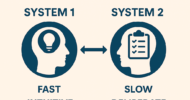Pediatricians face a difficult task determining when to refer a child for a suspected bone marrow failure syndrome. We now realize that only a subset of children with bone marrow failure syndromes present with the findings described in textbooks. These children often appear well and lack classical physical stigmata. By the time they look sick, their marrow’s ability to produce blood cells can be so weakened that it could be too late — or at least much more difficult — to treat them successfully.
These rare disorders can range from life-threatening conditions requiring a hematopoietic stem cell transplant to mild cases treated with medication and/or watchful monitoring. Left untreated, a number of bone marrow failure syndromes can lead to cancers, particularly acute myeloid leukemia. Once AML develops in patients with bone marrow failure syndromes, outcomes are generally poor, so current strategies focus on early diagnosis and surveillance to initiate transplant prior to the development of AML.
Fortunately, there are several indications that should lead a primary care physician to refer a patient for evaluation.
Children with anemia, low red blood cell counts, can present with fatigue and an inability to pursue their normal activities. A baby might not have the energy to feed. Children with low white blood cell counts might present with infections, ranging from mouth sores or skin infections to serious potentially life-threatening infections. Children with low platelet counts might bruise easily and have nosebleeds.
What about the patient without symptoms? Here the clues may come from routine complete blood counts ordered for an unrelated reason, such as preparation for surgery or as part of a well-child check-up. Likewise, other combinations of symptoms and characteristics might warrant ordering a CBC to see if bone marrow failure might be at work.
- Children with a viral infection often have low blood cell counts. These patients should be monitored to make sure the count returns to normal within a few weeks after the child recovers.
- Often children with bone marrow failure present with short stature without a clear reason for it. Being short, of course, is very common, but if a child has short stature and abnormal blood counts, that raises the ante.
- A child with low counts in more than one type of blood cell should be referred for evaluation.
- Mild anemia is not an automatic signal for referral, but if the child has anemia with large red cells without an apparent cause, then the child should be evaluated because enlarged red blood cells can be a sign of marrow stress. They are often an early indication of a bone marrow failure disorder or a malignant or pre-malignant condition.
- If a patient reports a family history of cancer, particularly leukemia or solid tumors, at a young age, obtaining a complete blood count is in order. Leukemias such as acute myeloid leukemia, are most common in people older than 60. If a patient’s father had leukemia at 30 or a cousin/sibling had leukemia at 7, that’s a red flag.
- Neutropenia, or low white cell count, is common and not, in and of itself, reason for referral. But if a patient has neutropenia together with short stature or poor growth or severe diarrhea or physical anomalies, then the child should be evaluated.
- Unexplained, persistently low platelets can be a presenting sign of bone marrow failure. The most common reason for low platelets in childhood is ITP or immune thrombocytopenia, which typically resolves over 3-6 months. If it doesn’t, then the child should be evaluated.
- Patients with physical anomalies together with blood counts that are low and without an apparent cause may have a bone marrow failure disorder.
If you suspect a child might have a bone marrow failure syndrome, then it’s important to refer the patient to a multidisciplinary program with the expertise to evaluate and treat problems in the wide range of organs — including the gastro-intestinal system, lungs, heart, and kidneys — that might be affected by marrow failure syndromes. Cutting edge genomic testing now allows individualized, tailored therapies and surveillance strategies. Such patients benefit from referral to a center with expertise in evaluating and treating these complex disorders.
Working together, the primary care pediatrician and specialty clinic can ensure that children with bone marrow failure are caught early enough to enjoy the maximum likelihood of successful treatment.
Akiko Shimamura is director, Bone Marrow Failure and MDS Program, Dana-Farber/Boston Children’s Cancer and Blood Disorders Center, Boston, MA.
Image credit: Shutterstock.com



























![Surviving kidney disease and reforming patient care [PODCAST]](https://kevinmd.com/wp-content/uploads/Design-2-190x100.jpg)

![Antimicrobial resistance: a public health crisis that needs your voice [PODCAST]](https://kevinmd.com/wp-content/uploads/Design-1-190x100.jpg)
